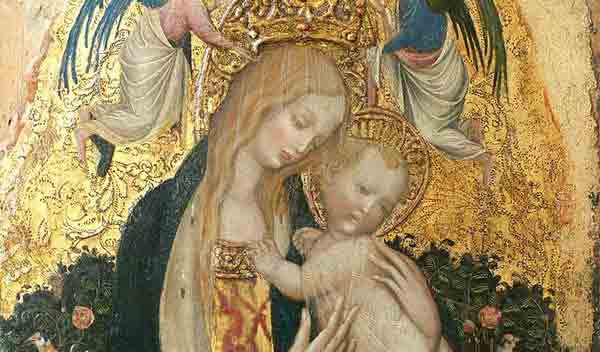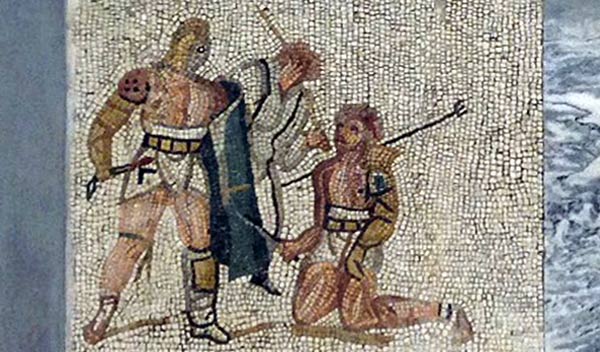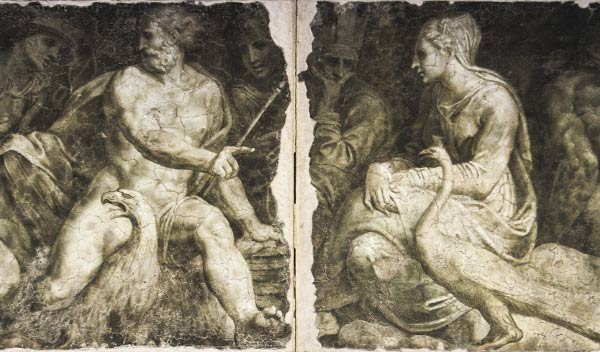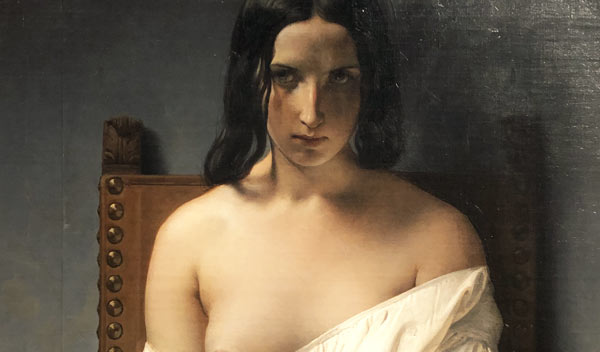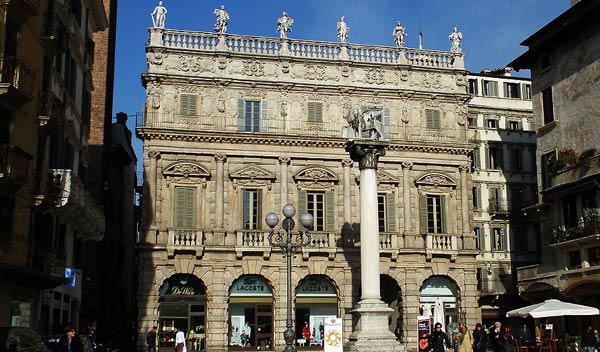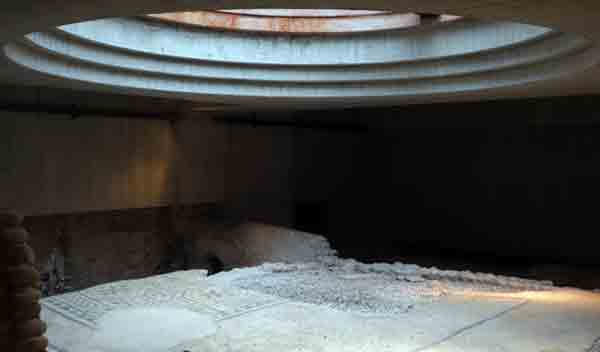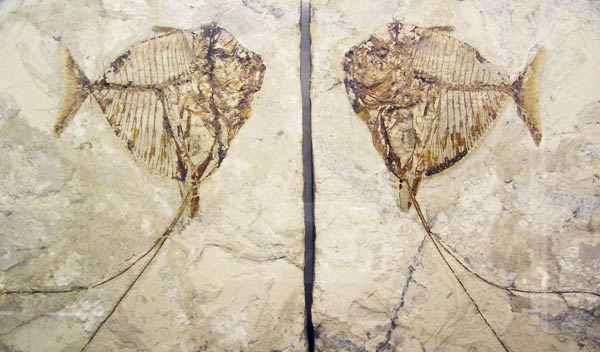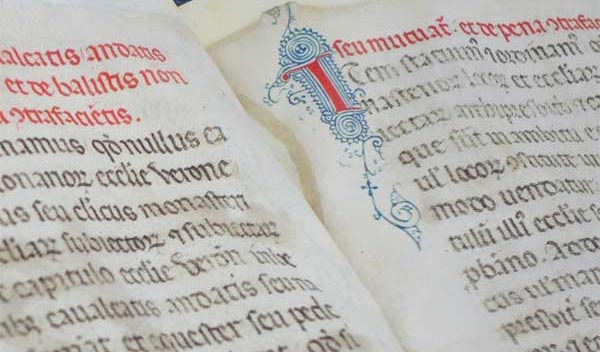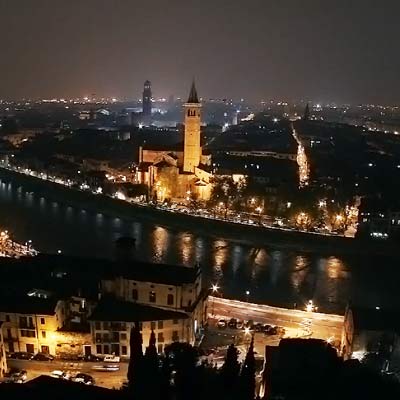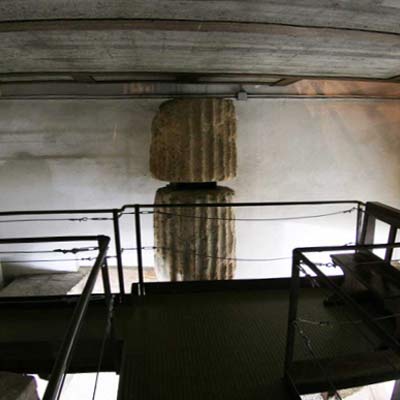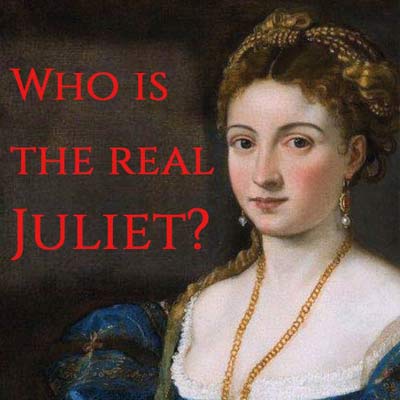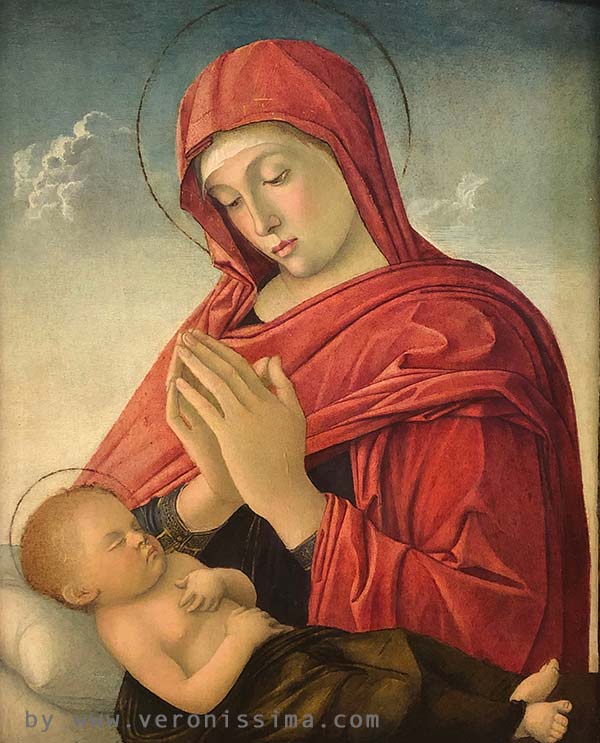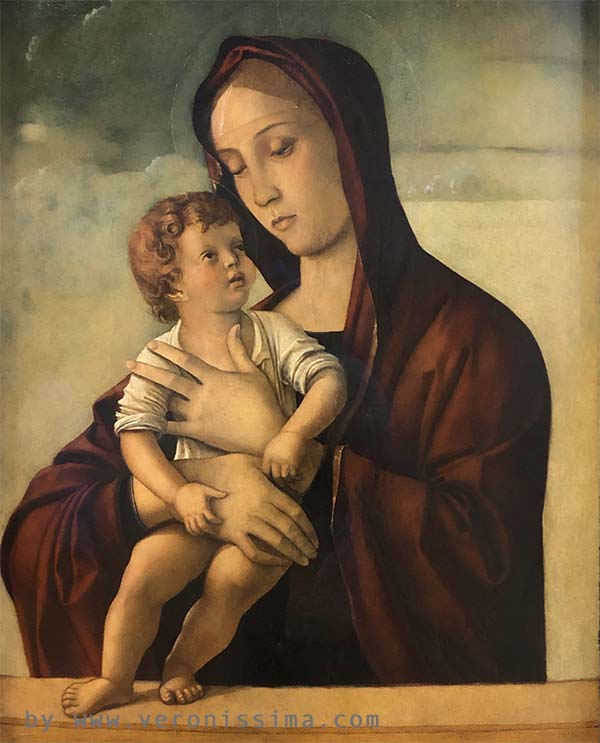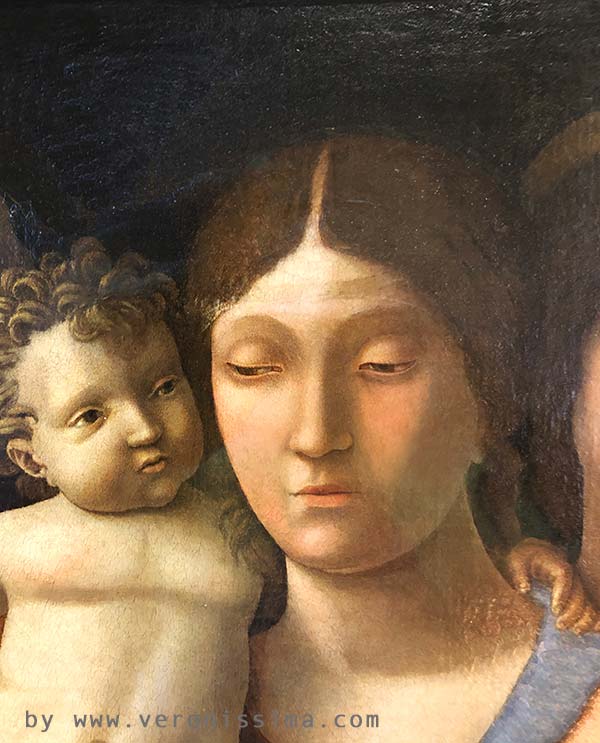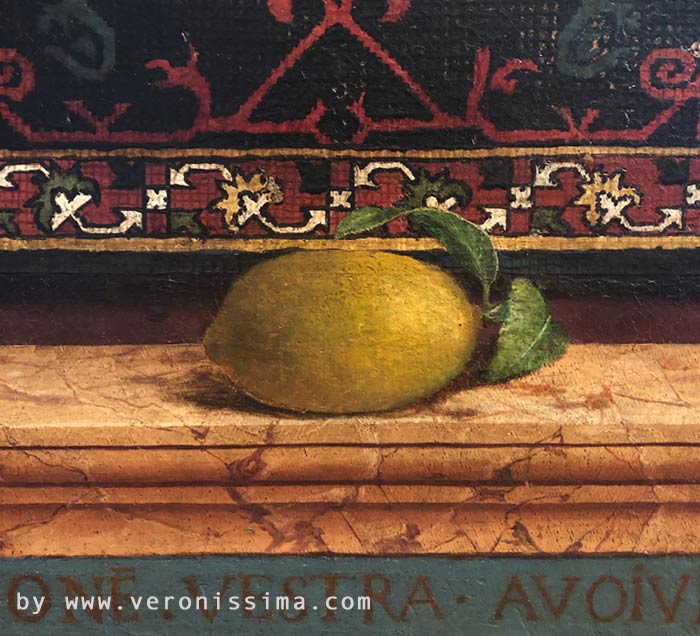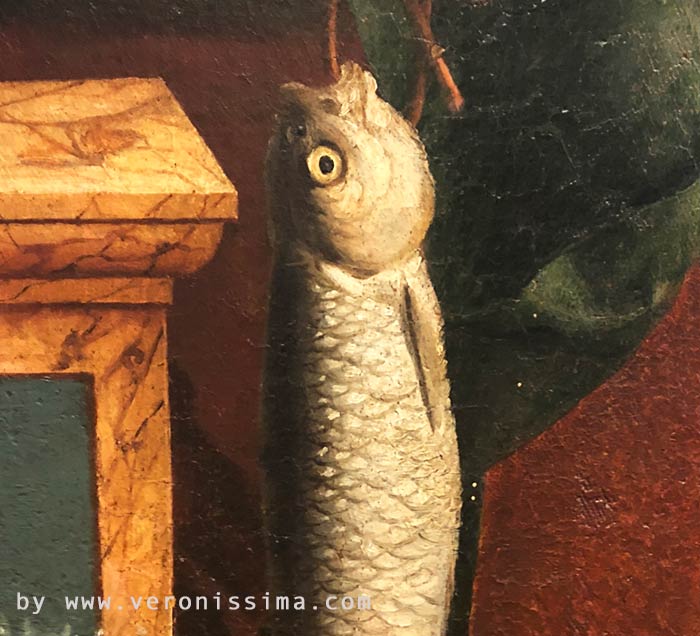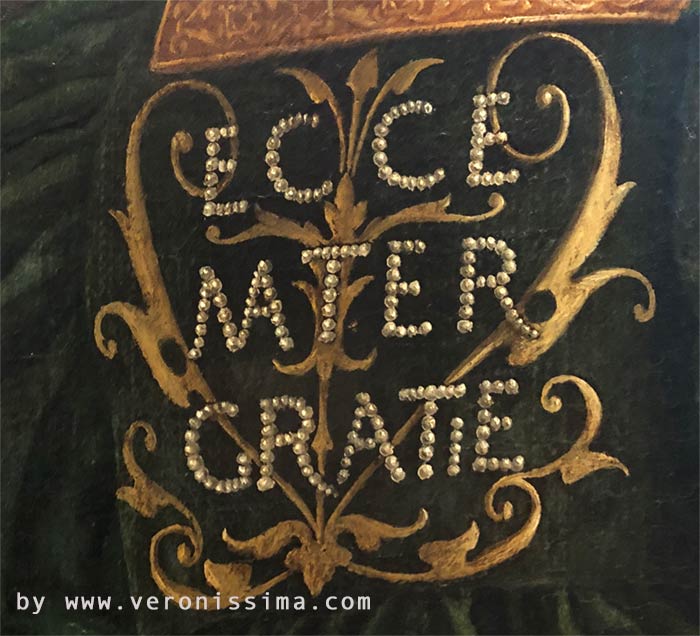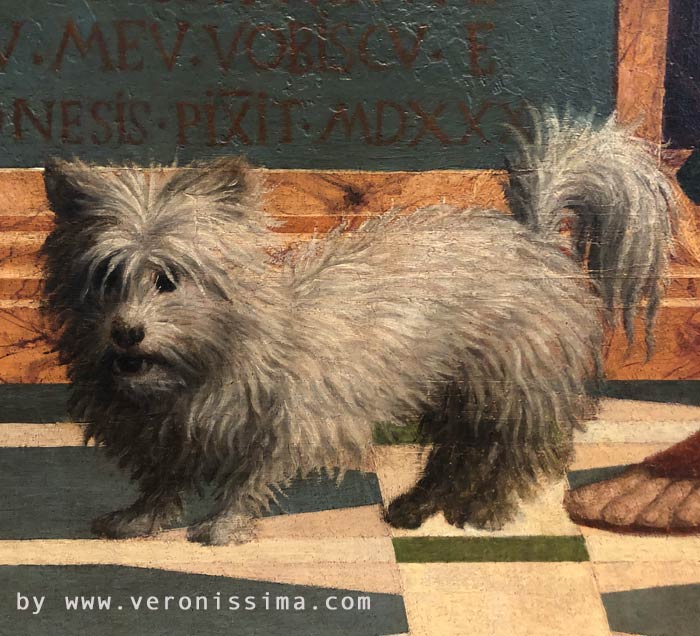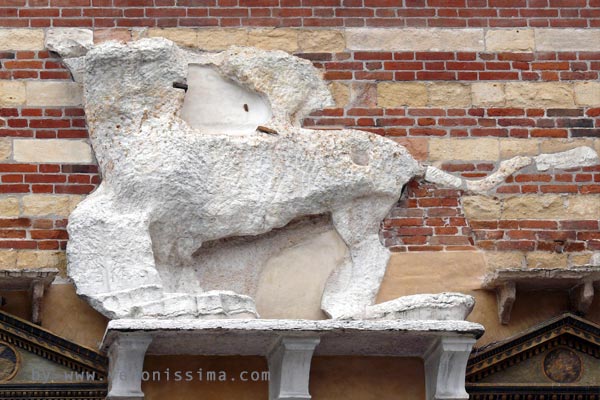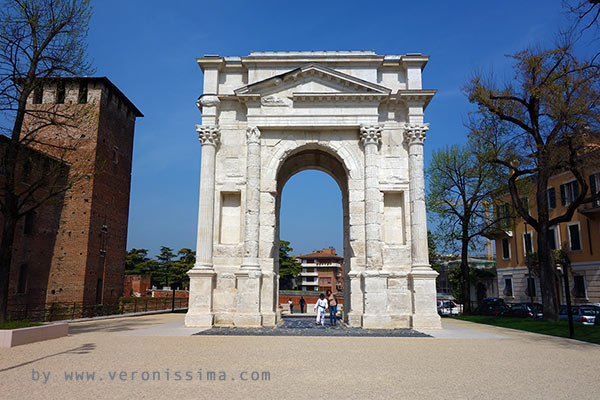Castelvecchio Museum
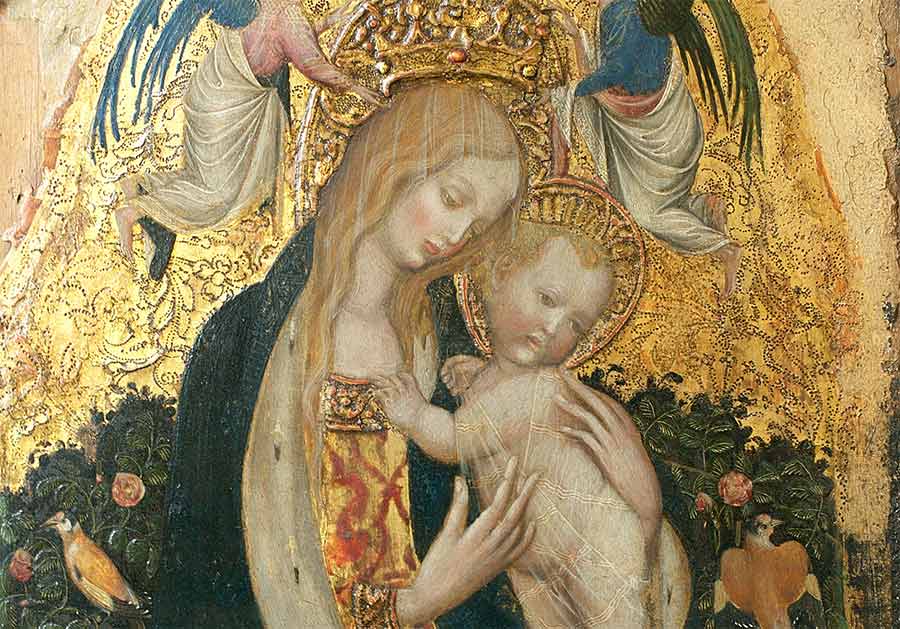
Castelvecchio is the most important museum in Verona. It is inside the castle built by the Scala family in the mid-1300s. It exhibits Medieval and Renaissance sculpture and has a rich picture gallery, ancient bronze bells, jewelry, weapons and armor. It is also famous for the restoration by architect Carlo Scarpa.
Oncoming Tours
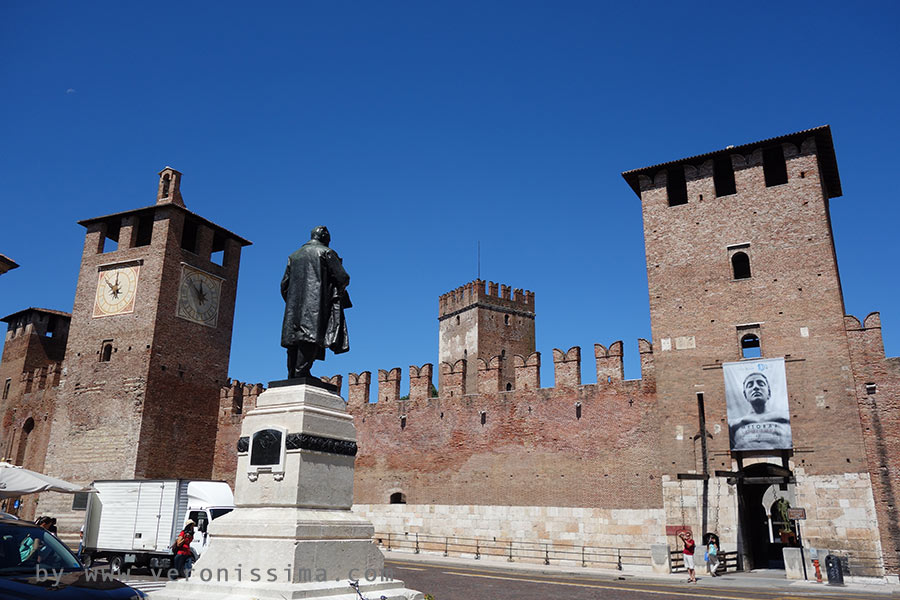
The guided tour of Castelvecchio is an excellent completion of an itinerary in Verona or it can be a stand-alone tour to explore historical and artistic themes.
It is an ideal didactic tool for school groups on a trip to Verona to deepen their knowledge of Italian art.
Themes & Itineraries
The exhibtion route winds in and out of evocative courts, salons, medieval walls, and wall walks that have been skilfully restored and coherently connected by Carlo Scarpa, Italian XX century architecture master.
Here are some suggestions for a visit to discover the Museo di Castelvecchio.
Middle age Sculpture
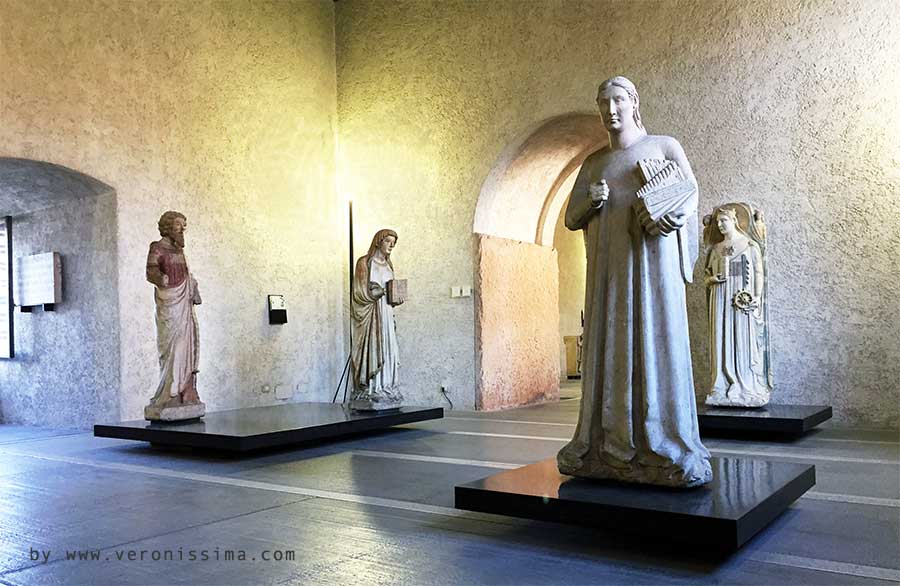
Our guided tour of the Castelvecchio Museum begins on the first floor where the sculpture collection is located. In a series of rooms connected by arches, you will find beautiful works that show the evolution of Veronese sculpture from the Romanesque style to the early Renaissance examples.
It is worth stopping to look at the works of the School of the Master of Saint Anastasia. They are elegant and slender tufa statues according to the typical Gothic canons. They are representations of saints coming from various city churches destroyed or renovated during the centuries. In origin they were painted and some of them preserve traces of the vivid colors.
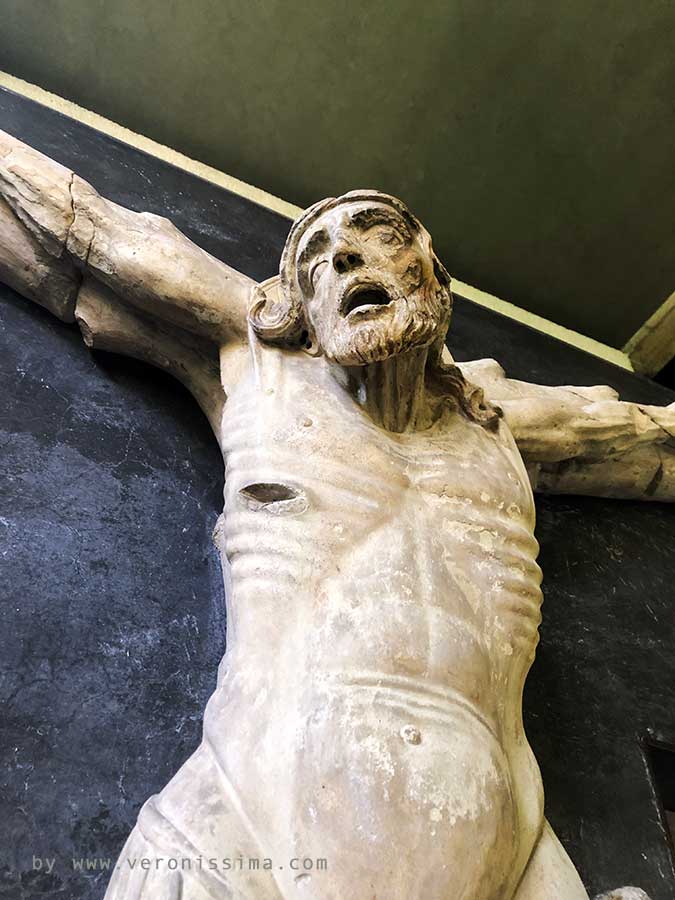
Also very interesting and of great impact is a stone crucifixion. The realism with which the sculptor, with clear central-European influences, realized the passion of Christ and the sufferings of the Virgin Mary and Saint John is impressive.
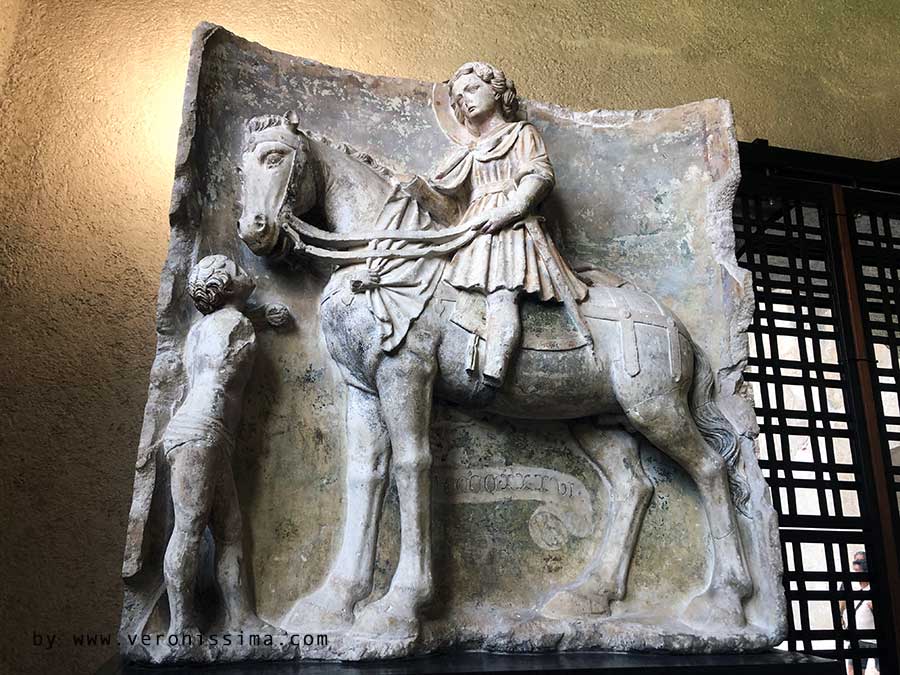
The sculpture section ends with a "St Martin and the poor man" fully Renaissance in the anatomical rendering of the human body and the horse, in the proportions, in the general harmony of the composition.
Scala family private courtyard
Now we go outside, in the courtyard of the residential wing of the Castle.
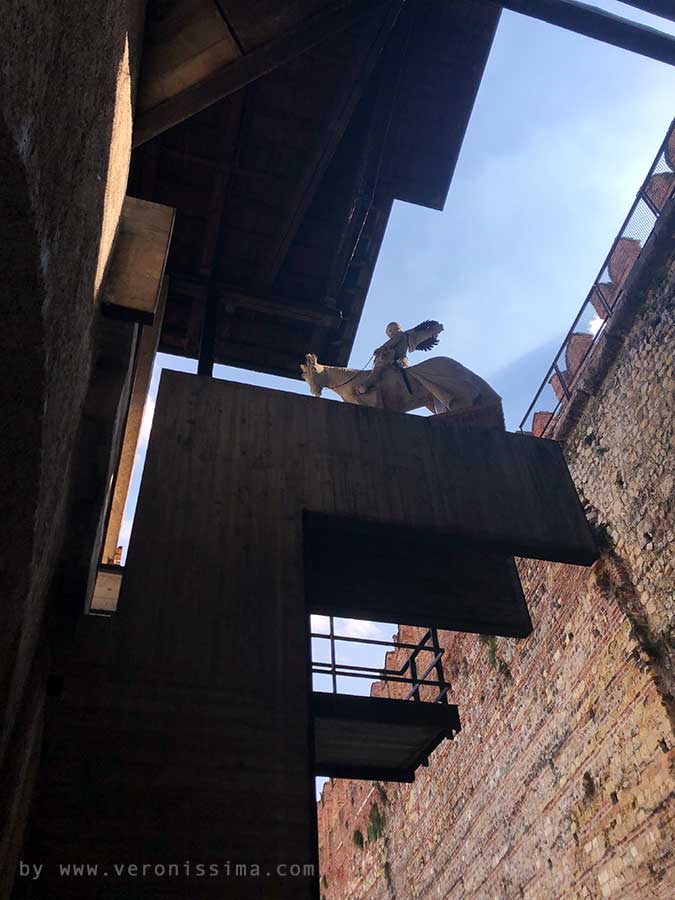
If you look up you will see the statue of Cangrande that once decorated the top of his monumental tomb. It was replaced by a replica to preserve it from the weather and the original brought to Castelvecchio where it was placed outside under an extension of the roof.
Il Mastio
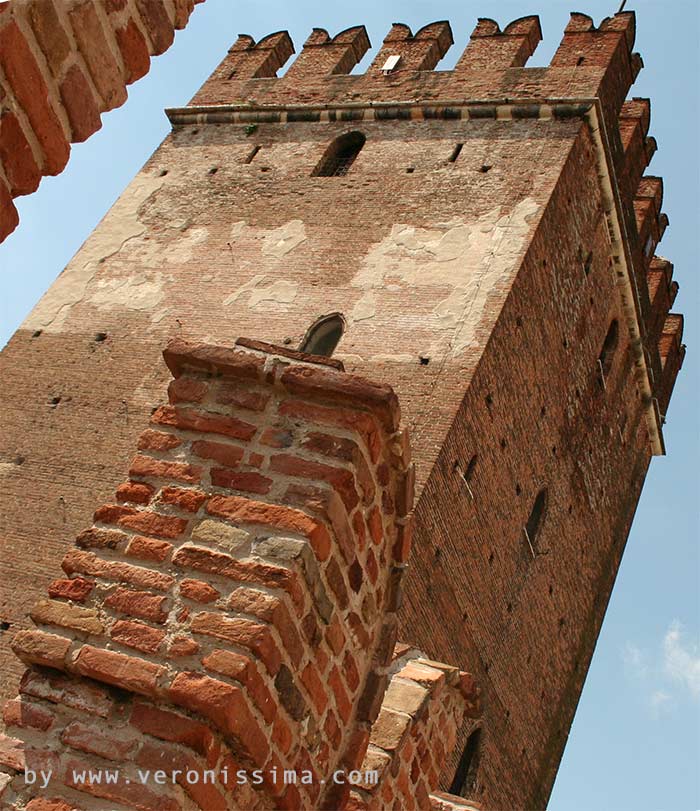
We re-enter through the keep to climb to the upper floor of the old residential wing of the castle. Along the way, you can admire some ancient bronze bells with Scala family insignia and some Gothic shrines from the Visconti era.
During the Venetian period in Verona, the Castelvecchio keep was used as a prison.
Gothic Painting
We then move on to the picture gallery with a number of works of the International Gothic movement which enjoyed an exciting season in Verona.
You can admire some detached wall paintings of the various Veronese artists such as Altichiero and Turone da Maxio. For example, a rare representation of Battle of Knights from the Scala family palace.
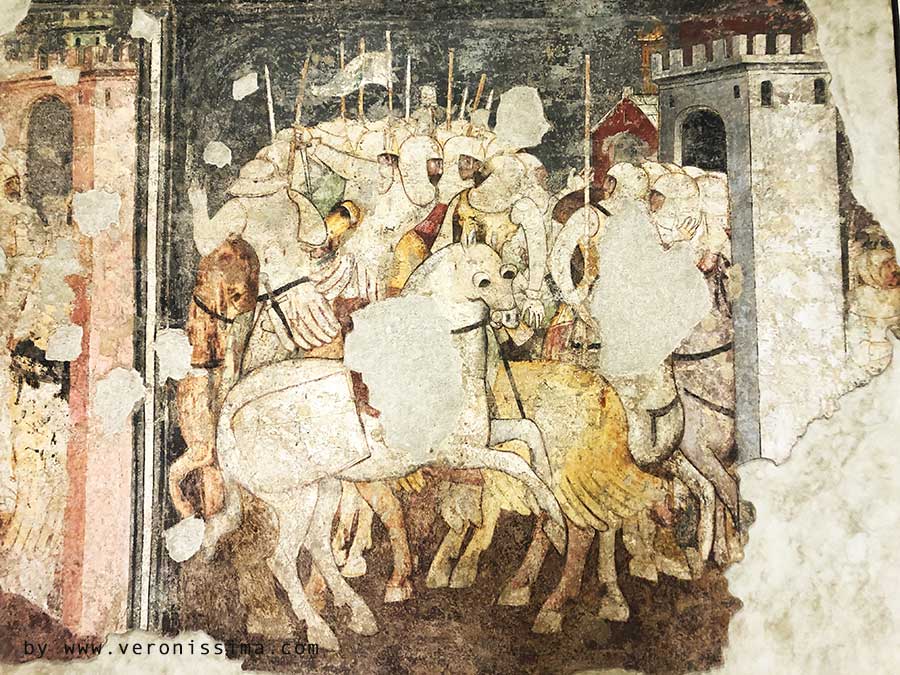
In the 1300s most painting was sacred in theme. This very detailed work, on the other hand, gives us an extraordinary snapshot of the armor and weapons of warriors and the confusion of the melee in a 14th century fight.
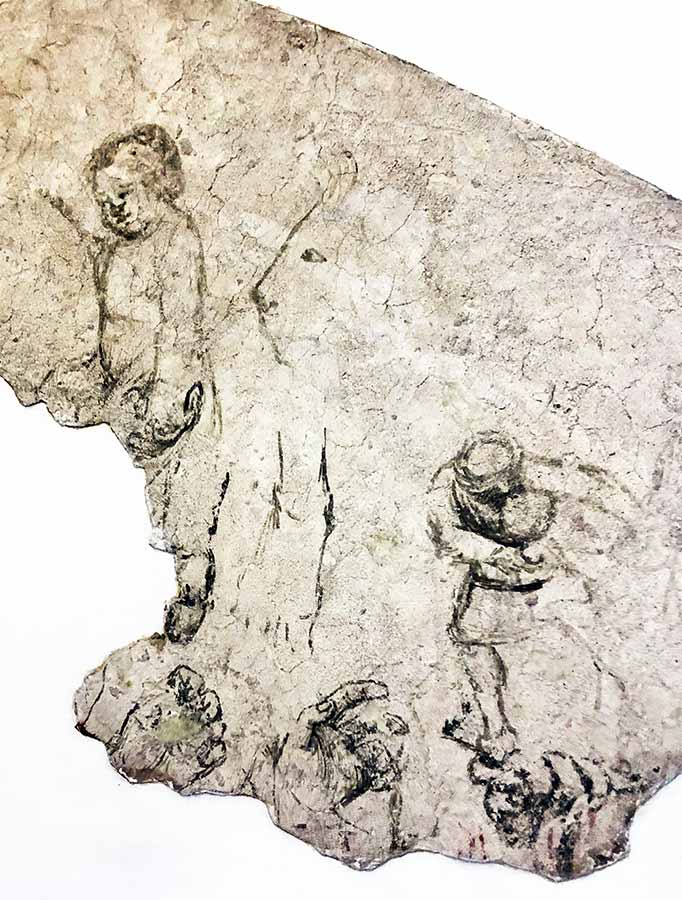
From the church of San Fermo comes the fresco by Altichiero for the tomb of Aventino Fracastoro. It represents the Coronation of the Virgin. In the detachment that took place in 1958, the various underlying layers came off separately revealing sinopie, the preparatory drawings, sketches of subjects that have nothing to do with the finished work. It is likely that Altichiero or his assistants were practicing drawing while the preparatory layers were drying.
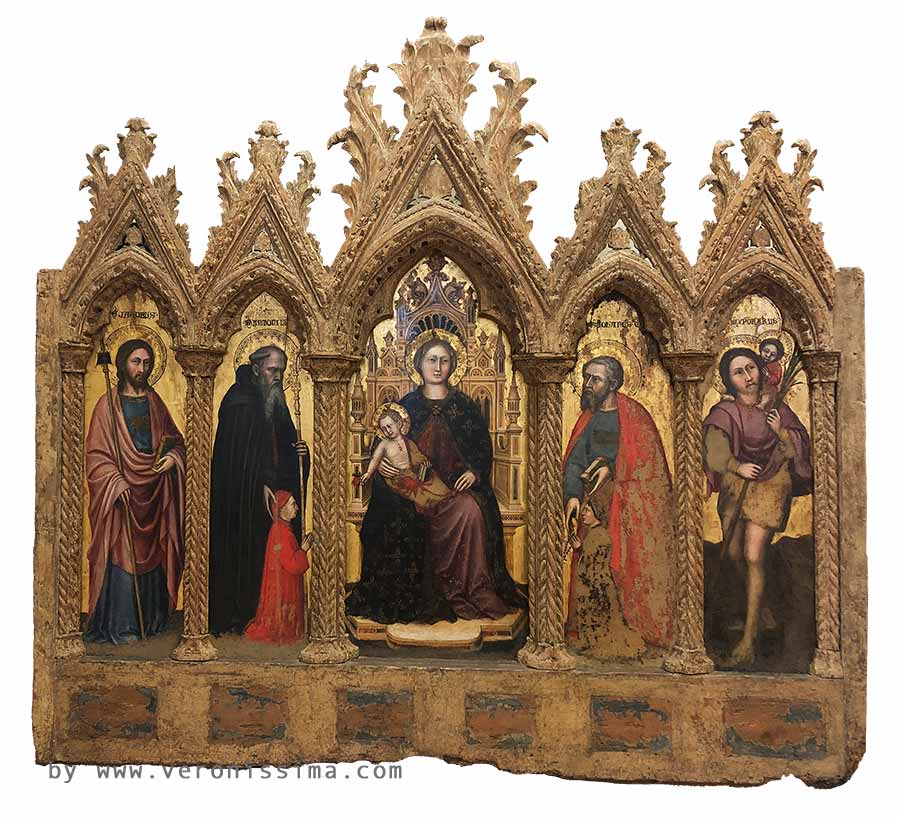
Very suggestive are also the typical Gothic polyptychs painted in tempera with wide backgrounds and gilded niche frames by artists such as Giovanni Badile, Stefano di Giovanni, Michele Giambono. These works are true jewels, often still adorned with their original frames, complex in their carvings and sumptuous in their decorations.
Cangrande's Sword
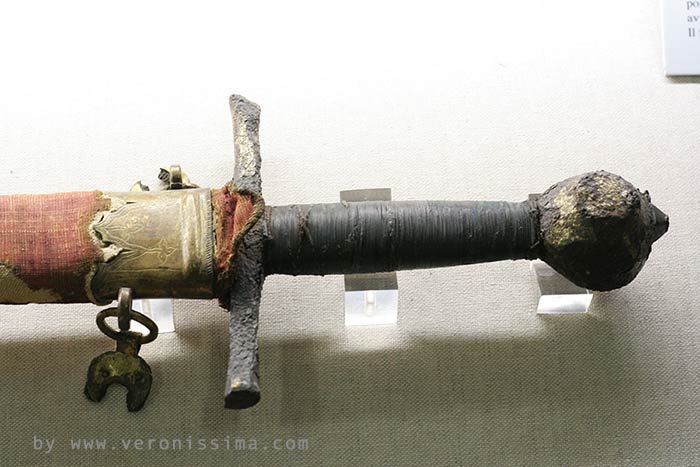
In the room at the beginning of this section, placed in an illuminated case, is the sword of Cangrande. It was taken from the monumental ark of the most important lord of Verona in 1921, when the sarcophagus was opened for the first time.
Medieval Jewels
Next to Cangrande's sword are some precious medieval jewels. A large gold star and a brooch studded with precious stones, a belt covered with pearls.
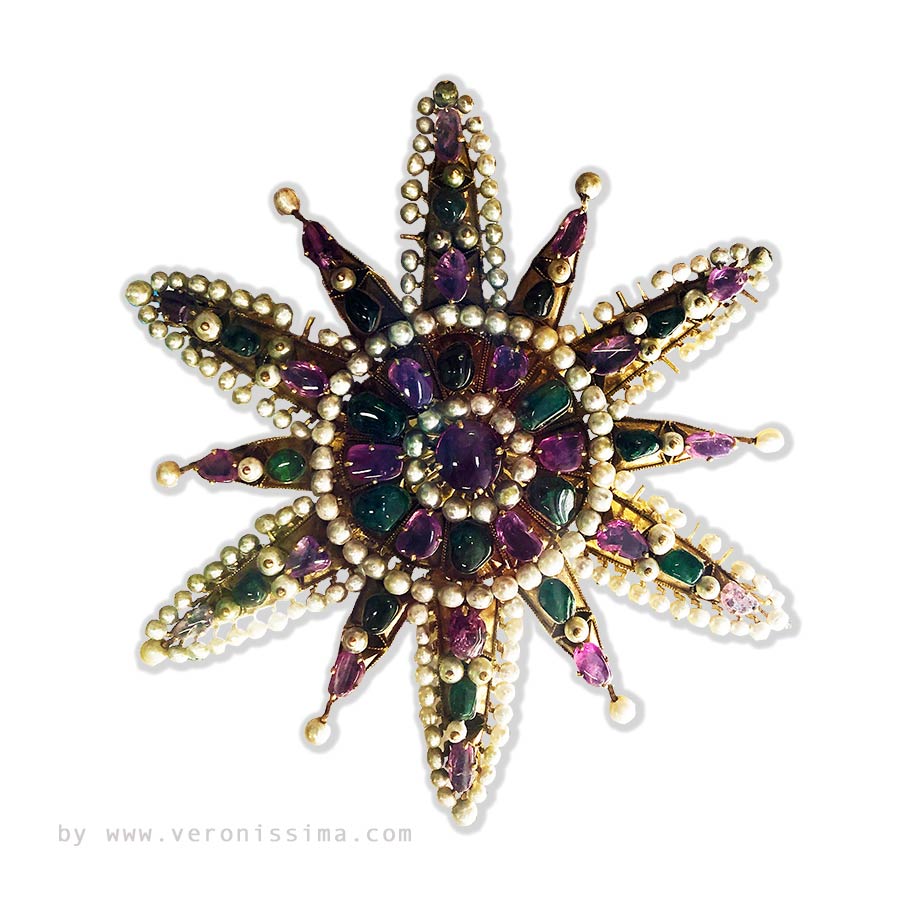
They were discovered hidden in a house in Verona.
According to many scholars, the refinement of the workmanship and the preciousness of the materials made them worthy of a royal court and it is likely that they were part of the Scaliger treasure. Perhaps they were hidden when the last lords of Verona fled the city at the entrance of the Visconti. Surely they would not have brought such precious objects on an uncertain and dangerous journey. Perhaps they hoped that they would soon be able to return to Verona to retrieve them.
Pisanello and the Madonna of the Quail
It is certainly the most important and representative work of Castelvecchio. It is a fundamental painting and you can find it in many art history textbooks.
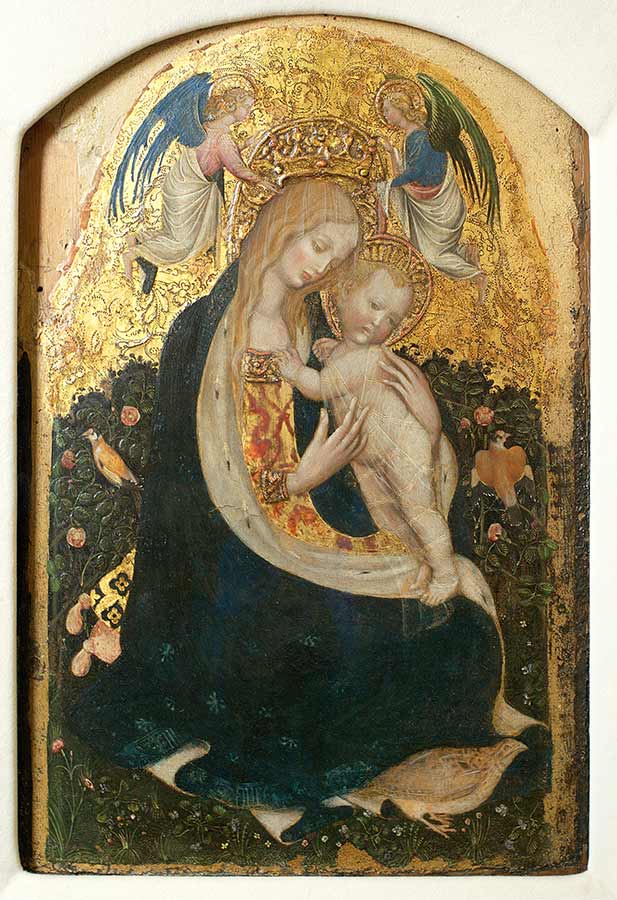
The Madonna of the Quail is a painting that acts as a trait d'union between traditional Gothic painting, linked to Byzantine art, and the new Renaissance painting. It has the size and setting of a classic icon for private devotion, but the background is half gold and half a realistic rose garden in which the Madonna and Child sits. The Virgin Mary is depicted with great realism as if she were one of the refined noblewomen that Pisanello was so good at portraying and that anticipate authors such as Filippo Lippi, Piero della Francesca, and Raffaello.
At the feet of the Madonna is painted with great realism a quail, symbol of the Eucharist. Pisanello was very skilled in depicting animals.
Despite the nickname he took from his mother or father, Pisanello was a very Veronese painter, although part of his life is still shrouded in a halo of mystery and he spent many years between Venice, Mantua and Rome, where they competed for his art. He was an important anticipator of Renaissance painting. In his works there are already hints of perspective, depth, realistic rendering of nature and the human figure even with very daring angles.
Early Renaissance
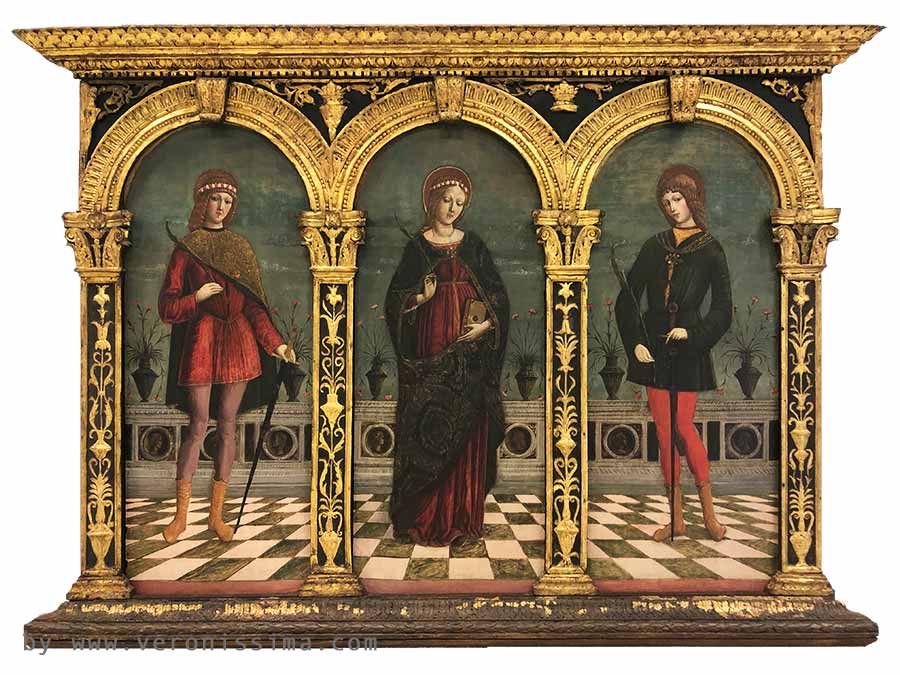
We then move on to the works of Verona at the turn of the Renaissance, with the first pre-Mantegnesque attempts to imitate the new style in the works of Antonio Badile and some masterpieces of the Venetian school such as the great crucifix by Jacopo Bellini, or the works of Morones, father and son, and Liberale da Verona.
There is no shortage of masterpieces by great masters such as two Madonnas with Child by Giovanni Bellini, a Madonna of the Passion by Carlo Crivelli and a Sacred Family by Andrea Mantegna.
Andrea Mantegna is the man who brought the Renaissance revolution to completion in Verona. Although he was originally from Padua, he left his masterpiece in Verona: the San Zeno altarpiece. The great painting became the inspiration and object of study for entire generations of city painters. Mantegna took Pisanello's place as official painter at the Gonzaga court in Mantua.
Armors Collection
We re-enters in the keep that connects the two wings of the castle. In two small rooms there is a collection of weapons and armor. On one side big swords, scramasax (the long Celtic dagger), umbones and shield handles, parts of armor and horse harnesses and many other objects in bronze and iron extracted from longobard tombs present in the Veronese territory. They show the great metallurgical skill of this Germanic population that invaded Italy in the 6th century.
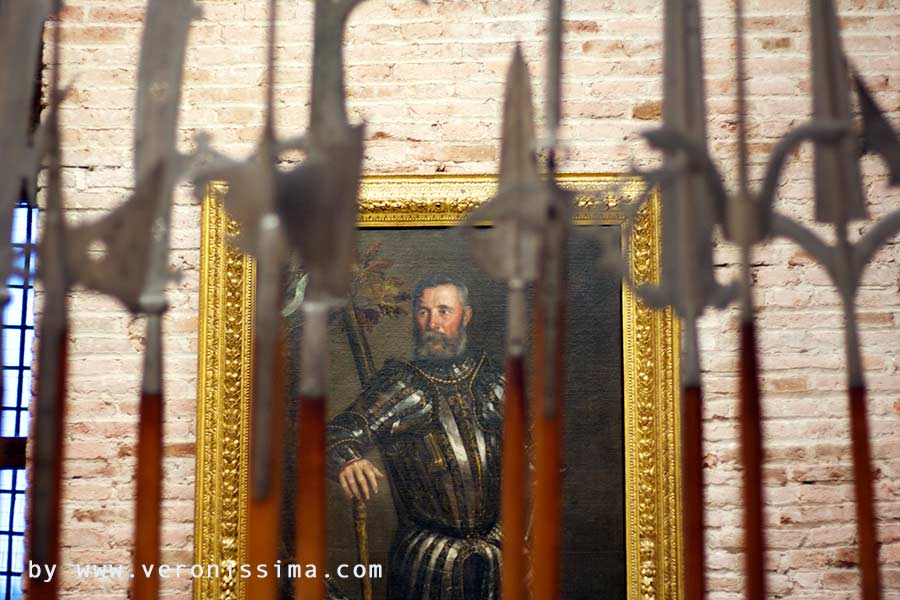
On the other, a series of Renaissance weapons of war and parade. Two-handed broadswords, pointing swords, iron maces, halberds and pikes. And then again helms, breastplates, shoulder straps, some finely historiated which often made them fundamental status symbols for the nobility of the time, as we can see in the large portrait of a nobleman all proud in his chiseled armor placed in the room.
Patrol Walks
Since March 2007, after many years of closure, thanks to careful restoration work, it is possible to visit a new section of the Castelvecchio patrol walkways, including Ghibelline merlons, towers and a hanging garden that opens suddenly between the narrow passages.
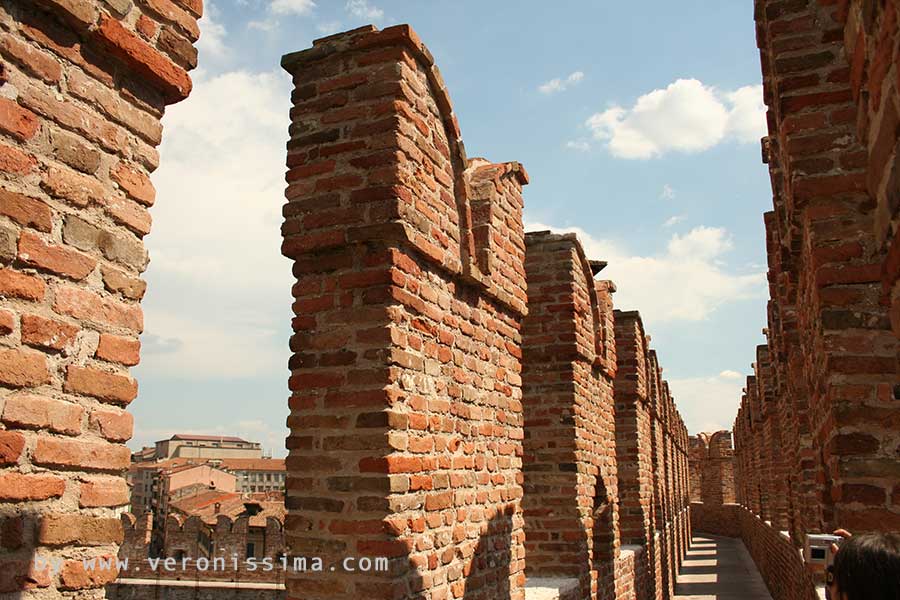
It is an evocative path that allows you to admire the manor and the city from unusual perspectives that will be the subject of striking photographs.
Two exceptional guides will accompany you on this journey back in time: Cangrande and Mastino II della Scala. Their equestrian statues were originally placed on the Arche, the funeral monuments of the Scala family, and are now positioned in key points of the castle. Seven centuries later, they still seem to dominate the atmosphere of the place with their presence. Commemorative tombstones mark some important events in the history of the Veronese lords. The possibility of accessing the patrol walkways is another reason to visit the Castelvecchio museum.
Cangrande's Statue
Once back down the walkways, we find ourselves face to face with Cangrande. The statue depicts him armed to the max on the back of his horse as if he were ready to go into battle or had just finished a melee. The sword is unsheathed.
The dog-headed helmet with imperial eagle wings for crest is drawn and resting on his back. What is most striking is the wide smile with which he looks at us and which is meant to represent the generous and magnanimous spirit of the greatest among the lords of La Scala.
.
The statue was originally placed on top of Cangrande's monumental tomb. Carlo Scarpa, in his setting up of Castelvecchio, did not want to enclose the statue inside the museum and placed it on a large concrete pedestal outside but protected by an extension of the roof.
Paintings from XV - XVIII Centuries
Back inside the Napoleonic wing, we move on to the section dedicated to the long and complex period from the Renaissance to eighteenth-century painting. This exhibition space was completed after Carlo Scarpa's death by his collaborator Arrigo Rudi. The atmosphere is radically different from that of the previous rooms in Castelvecchio, becoming darker and more gloomy, so much so that you think you are in a different museum.
Girolamo dai Libri
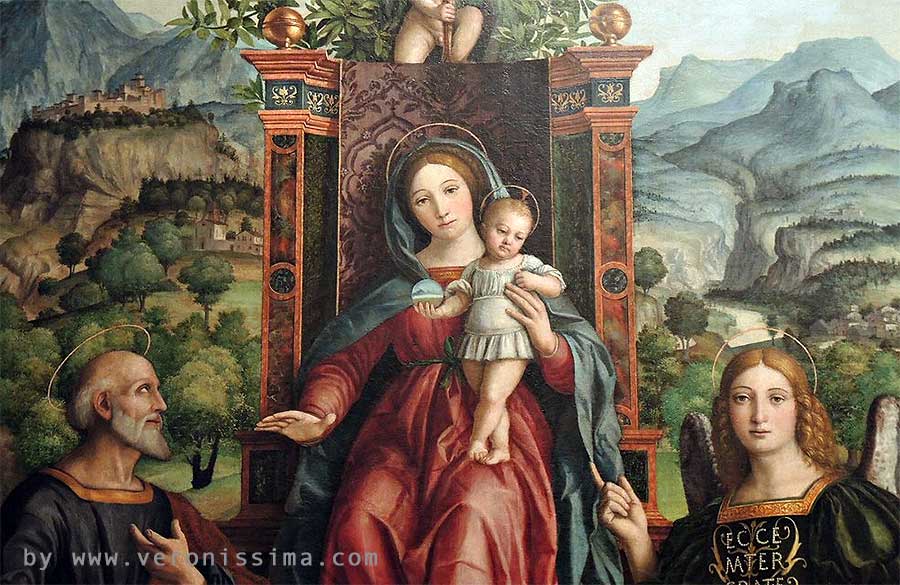
Particular attention should be paid to Girolamo dai Libri, the Veronese painter who most closely received Mantegna's lesson and applied it to his masterpieces. The layout of this painting on display at Castelvecchio clearly refers to the Victory Altarpiece painted by Mantegna for Francesco II Gonzaga.
Girolamo dai Libri (literally Girolamo of Books), as his name suggests, was not only a painter but also a very important codex maker. Castelvecchio preserves an important collection of them, which, however, cannot be exhibited permanently because of the fragility of the materials. Girolamo dai Libri's ability to paint accurate details on minute surfaces can be found in the incredible details of his works and in the bright colors of the clothes of the characters he depicts, another element of miniature derivation.
Francesco Caroto
Beginning in 1404, Verona had lost its independence. There was no longer a political center that gave precise direction to the arts with its patronage and by attracting famous painters.
Nevertheless, several very lively painting schools developed in Verona, producing good masters such as Francesco Caroto, who returned from his stay in Milan with the influence of Leonardo da Vinci's painting. Portrait of Young Benedictine but especially the Young Man with a Drawing of a Puppet, are a clear example.
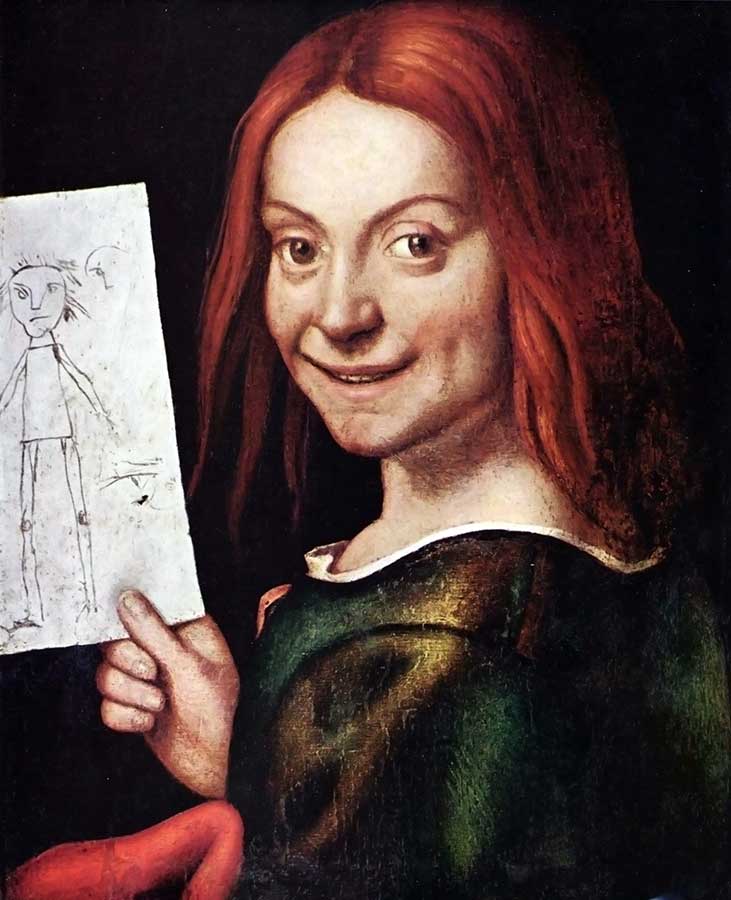
The latter is one of the emblematic paintings of the Castelvecchio Museum. A boy, or girl, caught in the instant in which is tuning to look at the painter and with an amused smile shows the childish drawing he or she has made.
Many have tried to interpret this unusual subject. Perhaps, while the boy was posing for the painter and bored he drew the portrait of the artist portraying him. And now he shows it to him. So it could be an original painting within a painting, an exchange of roles between person portrayed and person portraying. And us looking at it today trapped between the two by the canvas of the painting. Exactly what happens in the famous Las Meninas by Velazquez.
Paolo Veronese
This brings us to the genius of Paolo Caliari, the greatest and most famous artist in the history of Verona. Unfortunately, as soon as his extraordinary talents were realized, his art was requested in Venice, then capital of a powerful state. There, Paolo Caliari spent a good part of his artistic life, was known as the Veronese, and became one of the most celebrated, and highest paid, painters of his time. Few of his works are still in his hometown. Three are preserved in Castelvecchio.
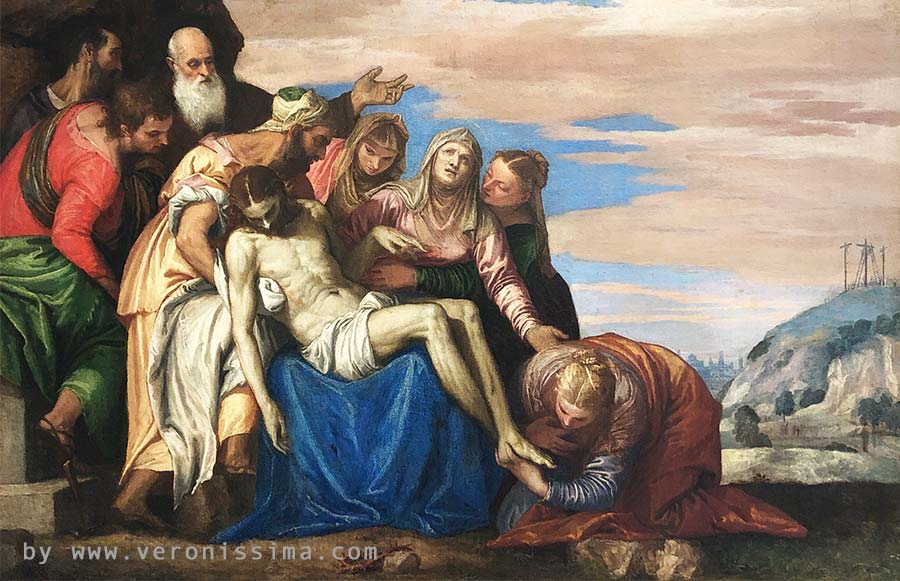
A splendid Deposition with bright and vivid colors where you can already notice its characteristic construction animated as a theatrical scene.
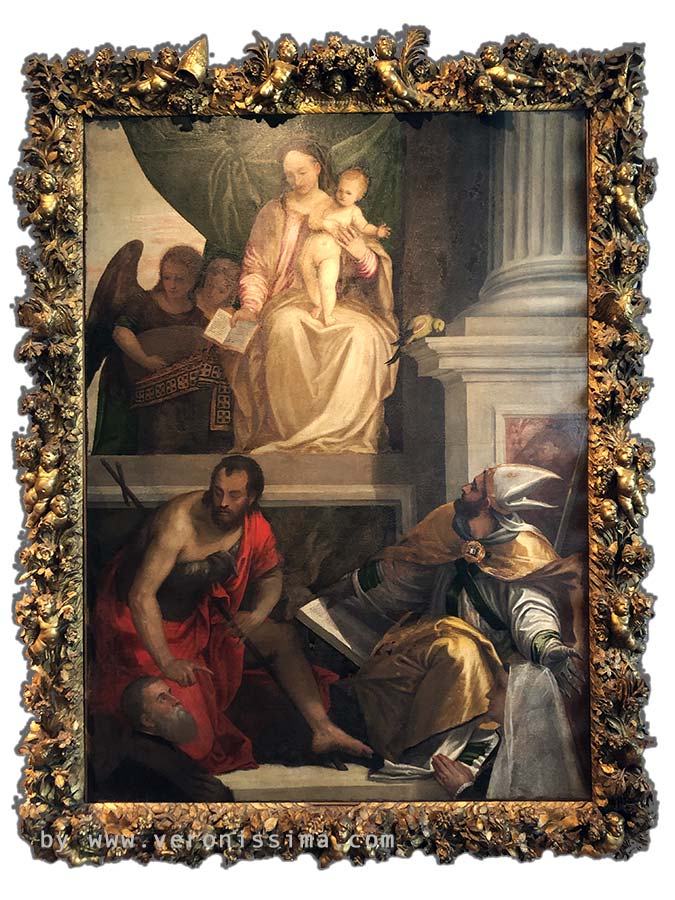
The Pala Bevilacqua Lazise, a large canvas with the typical triangular structure where the Madonna and Child stand at the apex, Saint Louis of Toulouse, Saint John and the patrons at the base. A colored parrot is almost a signature of Paolo Veronese, who loved to put exotic animals in his paintings, which also got him into trouble with the Inquisition.
Three small depictions of the lives of saints complete Veronese's collection of works for Castelvecchio.
Alessandro Turchi
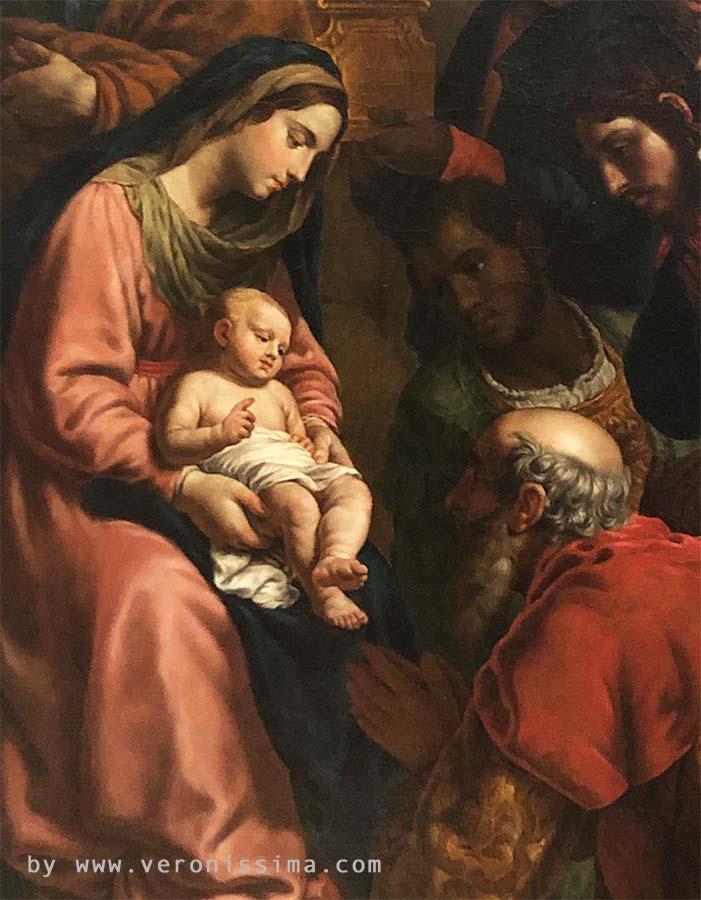
Alessandro Turchi is another painter of genius and great technique who, having trained in Verona, had great success outside the city, particularly in Rome where he worked for the popes. He was known as l'Orbetto. His works are already influenced by Baroque culture. They are crowded and enlivened by many characters and details, and realized with an extraordinary mastery and elegance.
The History of the Castle
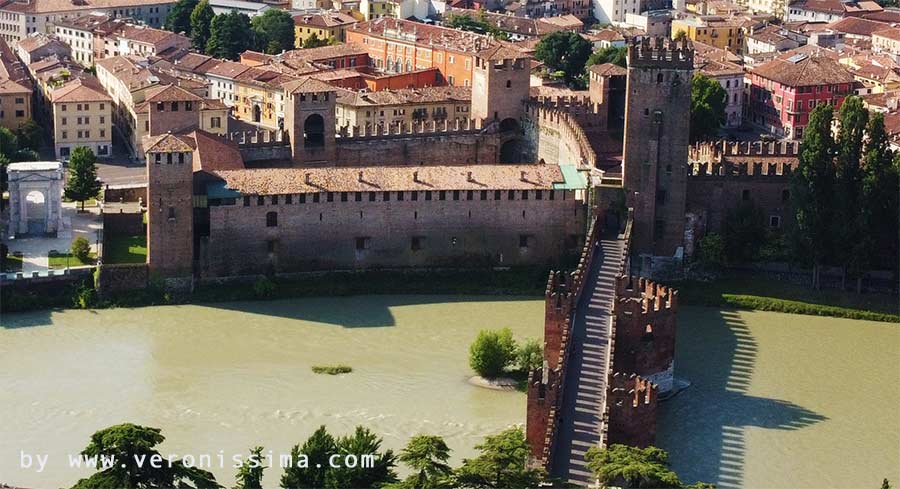
The historical events of Castelvecchio are complex and compelling. The fortress is the protagonist of 700 years of Veronese history. Accompanied by a tour guide, you will discover the events that led to the construction of the imposing fortress through the various phases of the tormented and bloody history of the Scaligera family.
Born out of Fear
Castelvecchio was built in the middle of 1300 by the lord of Verona Cangrande II della Scala, called Can Rabbioso because of his bad temper. At that time the lordship was already on the decline. In the city grew discontent with an increasingly despotic administration. Around Verona cities like Venice, Milan, Mantua were now of the great powers in search of territorial expansion. The Scaligers therefore wanted a fortress where they could feel safe in case of attack. Everything in Castelvecchio speaks of this fear. It was built astride the ancient city walls. In this way, the della Scala family and its army would have had more than one escape route depending on the origin of an attack: towards the city, towards the countryside, or via the river, since the castle is on the banks of the Adige River.
High walls, high towers, and a large number of entrances and exits.
High walls, crenellated towers, and a deep moat with drawbridges would have guaranteed an effective defense in the event of a siege.
If things had gone badly wrong, the fortified bridge, used exclusively by the della Scala family, would have guaranteed a quick and safe escape.
Inner courtyards, towers, patrol walkways and the suggestive Scaliger bridge are all accessible and are part of the guided tour of Castelvecchio.
Visconti and Venetians
Castelvecchio continued to maintain its role as a fortress even after the end of the Scaliger Seigniory. The Lords of Scala left Verona through the bridge of Castelvecchio, fleeing towards the Adige Valley and from there to Bavaria, where they found refuge. They were succeeded first by the Visconti and then by the Venetians who governed the city for the next 400 years.
Napoleon
Napoleon made Castelvecchio the headquarters of his army when he invaded Verona in 1797. He intervened heavily to adapt the fortress to his military needs. He had the buildings that stood around the castle demolished, including the Arco dei Gavi, a Roman monument from the first century AD. In the large courtyard that served as a parade ground during the Scaligera period, he had palaces built for the troops and service buildings.
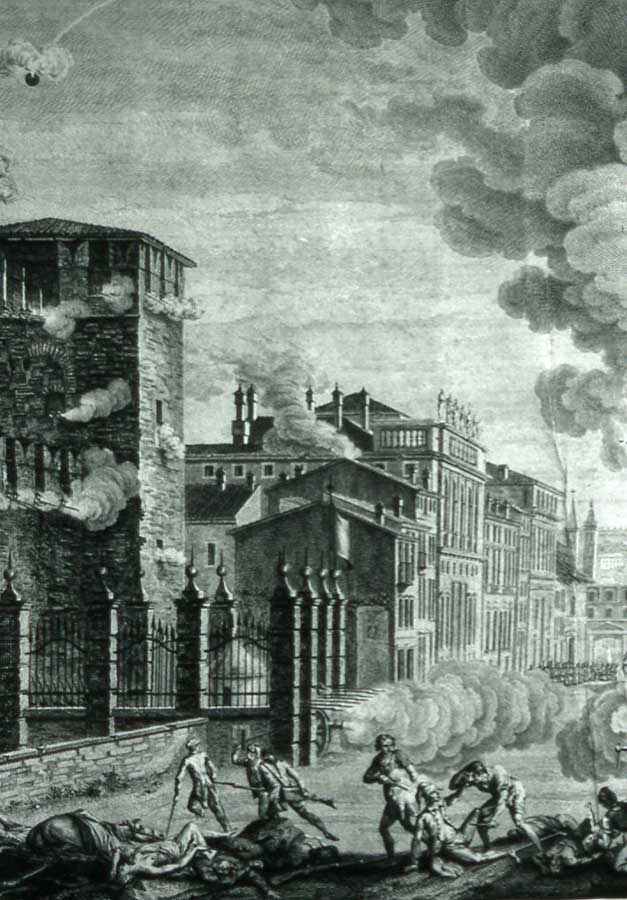
In 1797, the citizens of Verona rose up against the French occupation in what is known as the Pasque Veronesi. During the uprising, the French troops barricaded themselves in the fortress and cannonaded the rebels from there.
On the guided tour of Castelvecchio, the French architectural interventions in the courtyard can be clearly distinguished. Outside the Castle, the signs of Napoleon's grenades are still visible on some buildings along Corso Cavour.
The Gavi arch was rebuilt and restored on one side of the castle in the 1930s and still makes a fine display.
If you want to know more
The Austrians
In 1815 Verona was assigned to the Habsburg Empire along with the whole of Lombardy-Veneto. The Austrians provided the whole of the Verona area with an imposing system of fortifications that could withstand the technological innovation of modern artillery. Castelevecchio continued to function as a urban fortress, powder factory, and for a certain period became a military tribunal.
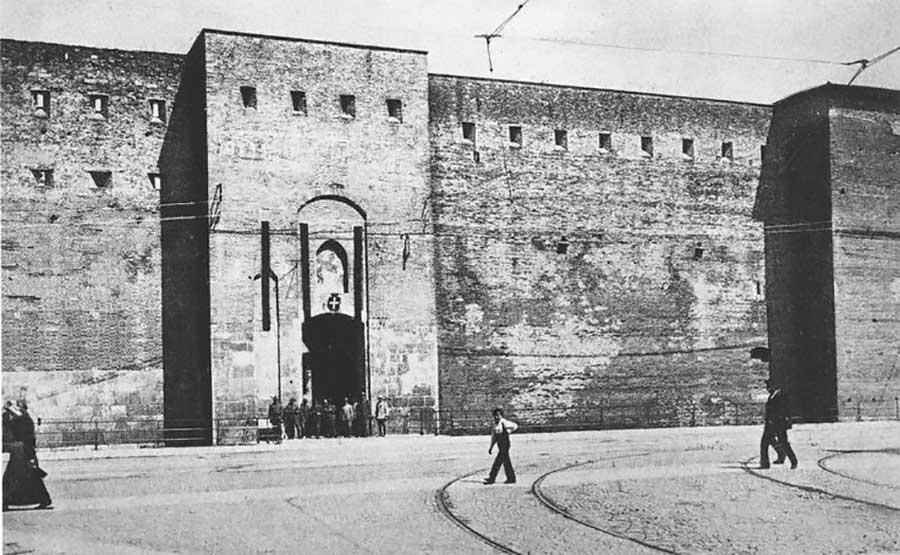
Its appearance was completely altered. The towers had been lowered, the walls had lost their battlements and the whole was that of an anonymous and ungainly nineteenth-century fort.
If you want to know more
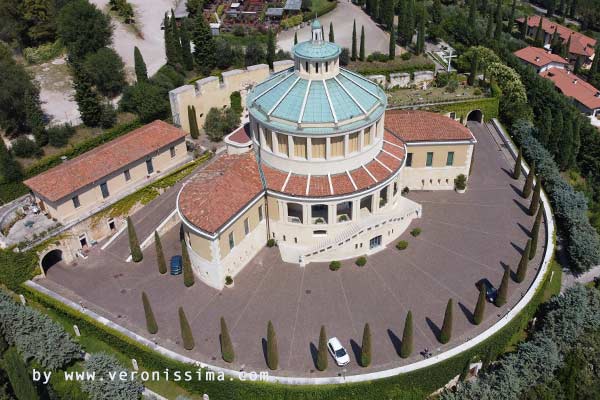
Austrian Verona
FIND OUTThe historical fake of the first restoration
With the annexation of the Veneto region to the Kingdom of Italy, a large-scale operation of restoration and urban renewal began in Verona. The operation was assigned to the architect and superintendent Antonio Avena. It was the era of restoration that recreated the ancient image of the monuments, without caring too much about originality. Antonio Avena rebuilt Castelvecchio as it appeared in some very detailed eighteenth-century views. In the interior buildings he "recycled" decorations and stone cornices from some of the ancient buildings that were destroyed in the flooding of the Adige in 1882. The result was of great visual impact, even if it was largely false. The results can still be admired (or criticized) today. Gradually, the museum began to be set up and some important art collections were transferred there, although one wing of the castle still belongs to the army, which has placed the Officers' Club there.
The Verona Trial
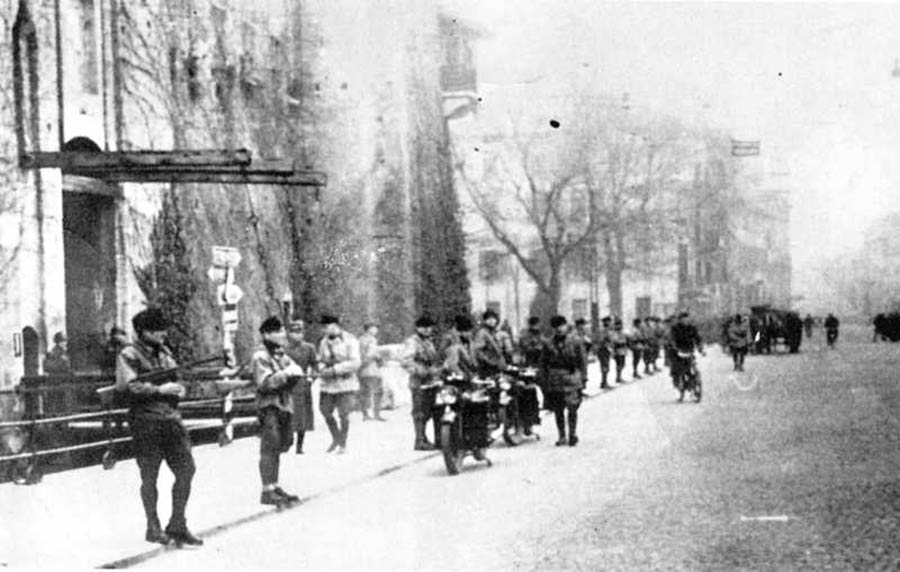
Castelvecchio was also the scene of one of the many dramatic moments of the Fascist regime. On July 25, 1943, given the disastrous outcome of the war, theGrand Council of Fascism had dismissed Mussolini. The former dictator was arrested, taken to a prison on the Gran Sasso, freed by a German commando, and finally put in charge of the Salò Social Republic, under whose jurisdiction Verona also fell. In a room in Castelvecchio, a trial was held against the members of the Grand Council of Fascism who had challenged Mussolini: Emilio De Bono, Luciano Gottardi, Carlo Pareschi, Giovanni Marinelli, Tullio Cianelli, and Galeazzo Ciano, who had married Mussolini's daughter Edda.
The sentence was already written and the defendants were all sentenced to death, including Mussolini's son-in-law. After crossing the Castelvecchio bridge, they were taken to the Austrian-era Procolo fort, where there is still a shooting range today, and shot.
The blow up of Castelvecchio Bridge
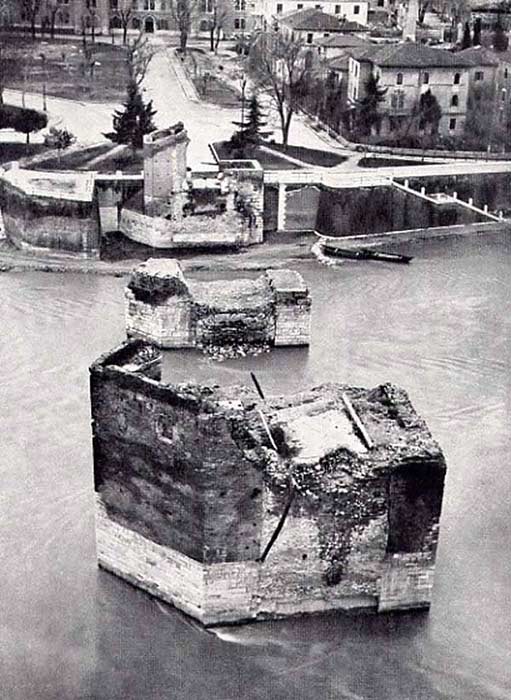
La guerra continuò per un altro anno. Nell'aprile 1945, le truppe tedesche di occupazione lasciarono finalmente l'Italia e Verona, ma non senza un'ultima offesa. Per rallentare l'inseguimento dell'esercito alleato in fuga attraverso la Valle dell'Adige, i tedeschi minarono tutti i ponti di Verona, compresi quelli storici. Il Ponte Scaligero fu demolito con la dinamite il 24 aprile 1945. Le vibrazioni provocate dall'esplosione furono tali che a Palazzo Canossa, vicino al castello, il prezioso affresco del Tiepolo si staccò dal soffitto della sala e si sgretolò al suolo. L'ala nord del Castello era stata distrutta dalle bombe alleate.
The Restauration - Carlo Scarpa
Reconstruction of the bridge began almost immediately after the war. It was decided to rebuild it exactly "as it was and where it was", taking advantage of what had been preserved of the central pylons. Looking at the Scaliger bridge today, it is impossible to tell the difference between it and the pre-war photos and paintings. The restoration of the castle and the refurbishment of the museum were entrusted to the renowned architect Carlo Scarpa in 1957. Carlo Scarpa's work was radical. His intervention was aimed at creating a contrast between ancient and modern elements that would enhance the enjoyment of the rooms and the works as much as possible. Carlo Scarpa's work is still considered his masterpiece on an international level..
If you want to know more
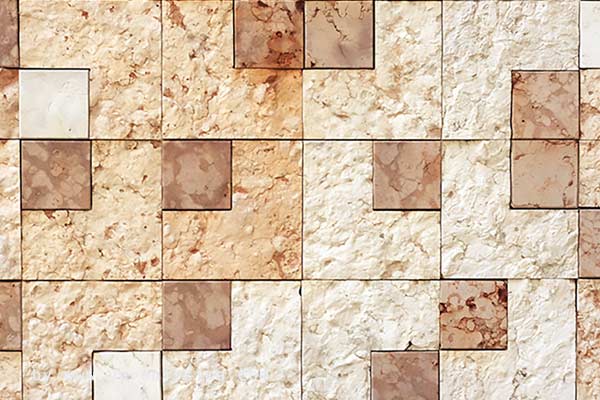
Carlo Scarpa's Restoration of Castelveccho
FIND OUTThe theft of Castelvecchio
On November 19, 2015, a gang of thieves broke into Castelvecchio at the time of the evening closing. After immobilizing the ticket office staff and attendants, the thieves set off through the rooms of the museum and removed numerous works from the walls. A total of 17 paintings were stolen, including such iconic works as Pisanello's La Madonna della Quaglia and Francesco Caroto's Ritratto di giovane con disegno infantile. Verona was shocked. Visitors to the museum were shocked by the signs of the frames on the empty walls where the stolen paintings were hung. After months of intensive and highly confidential investigations, the paintings were found in the Ukraine. The members of the gang were arrested. Among them was a guard at the Castelvecchio Museum who had acted as an intermediary. The real reasons for the theft have never been known. If there was a client or if they had tried to sell them in some circuit of receiving stolen goods. After some hesitation on the part of the Ukrainian authorities for the restitution, and a careful restoration, the works returned to their place and the whole city breathed a sigh of relief.
For information on guided tours to Castelvecchio, to its museum, to the walkways, to be coupled perhaps to the traditional city tours write to:
Enquiries and Bookings:
+39 333 2199 645 info@veronissima.com P.I. 03616420232 C.F. CPPMHL74L13L781C

 IT
IT 日本
日本 DE
DE FR
FR 中文
中文 ES
ES